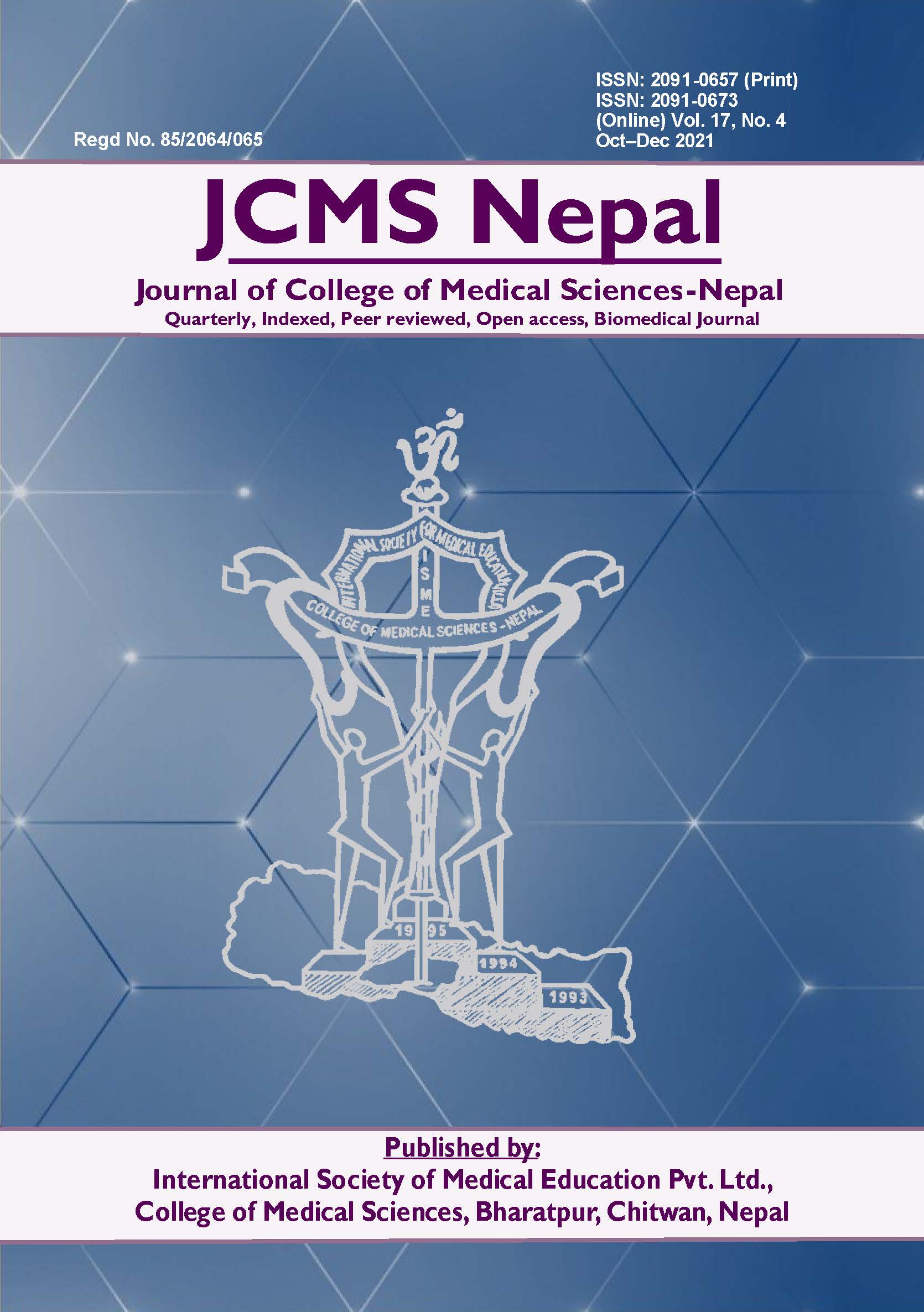Intraoperative Blood Loss, Surgical Duration and Postoperative Pain following Cold Dissection Tonsillectomy and Bipolar Electrocautery Tonsillectomy
DOI:
https://doi.org/10.3126/jcmsn.v17i4.42212Keywords:
bipolar electrocautery, bleeding, cold dissection, pain, tonsillectomyAbstract
Introduction: Tonsillectomy surgery is one of the common surgeries done in department of ENT and HNS. Over the past two centuries, indications and techniques for performing tonsillectomy has much changed. Several techniques for tonsillectomy are described, but their relative effectiveness still remains a matter of debate. To compare the intraoperative bleeding and post-operative pain following bipolar electrocautery tonsillectomy and cold dissection tonsillectomy.
Methods: This prospective randomized study was conducted on 60 tonsillitis patients planned for surgery in College of Medical Sciences, Bharatpur, Chitwan during a period of one year. They were divided into two groups: one undergoing tonsillectomy by use of bipolar electrocautery and the other Cold dissection tonsillectomy by random selection. Intraoperative bleeding and postoperative pain were scored and compared.
Results: In this study, the mean blood loss during cold dissection tonsillectomy was 25ml and during bipolar cautery was 12ml. The average operative time was 30 minutes for cold dissection group and 25 minutes for bipolar cautery group. The pain score for Cold dissection tonsillectomy group was significantly significant less when compared with pain scores for bipolar cautery tonsillectomy group.
Conclusions: Our study shows that tonsillectomy using bipolar electrocautery causes less blood loss and decreased operative duration than cold steel dissection, however it caused relatively more postoperative pain than cold steel dissection tonsillectomy.
Downloads
Downloads
Published
How to Cite
Issue
Section
License
Copyright (c) 2021 Chhanya Bhandari, Bibek Sharma, Apar Pokharel, Naganawalachulu Jayaprakash Mayya

This work is licensed under a Creative Commons Attribution-NonCommercial-NoDerivatives 4.0 International License.
This license enables reusers to copy and distribute the material in any medium or format in unadapted form only, for noncommercial purposes only, and only so long as attribution is given to the creator.




